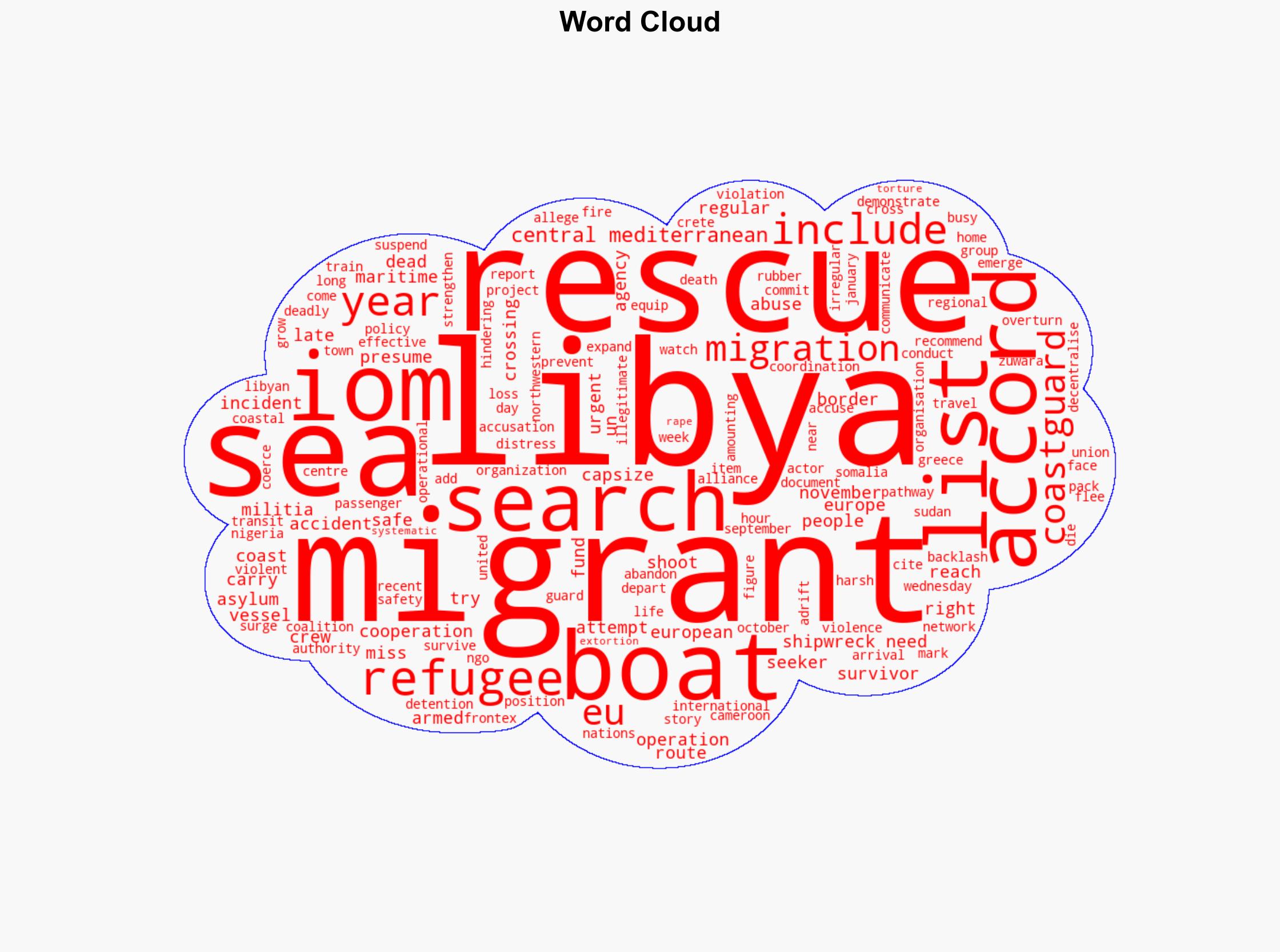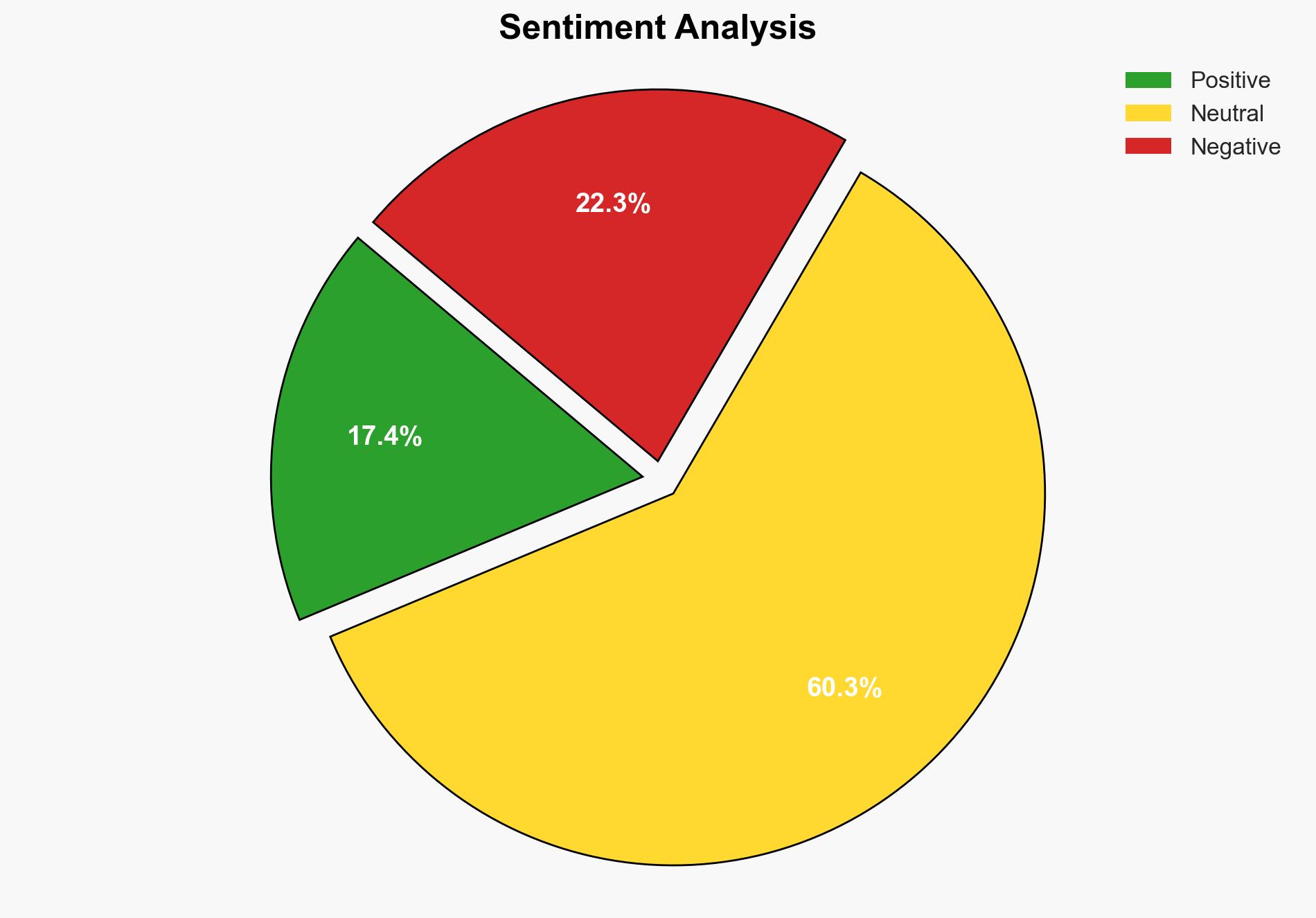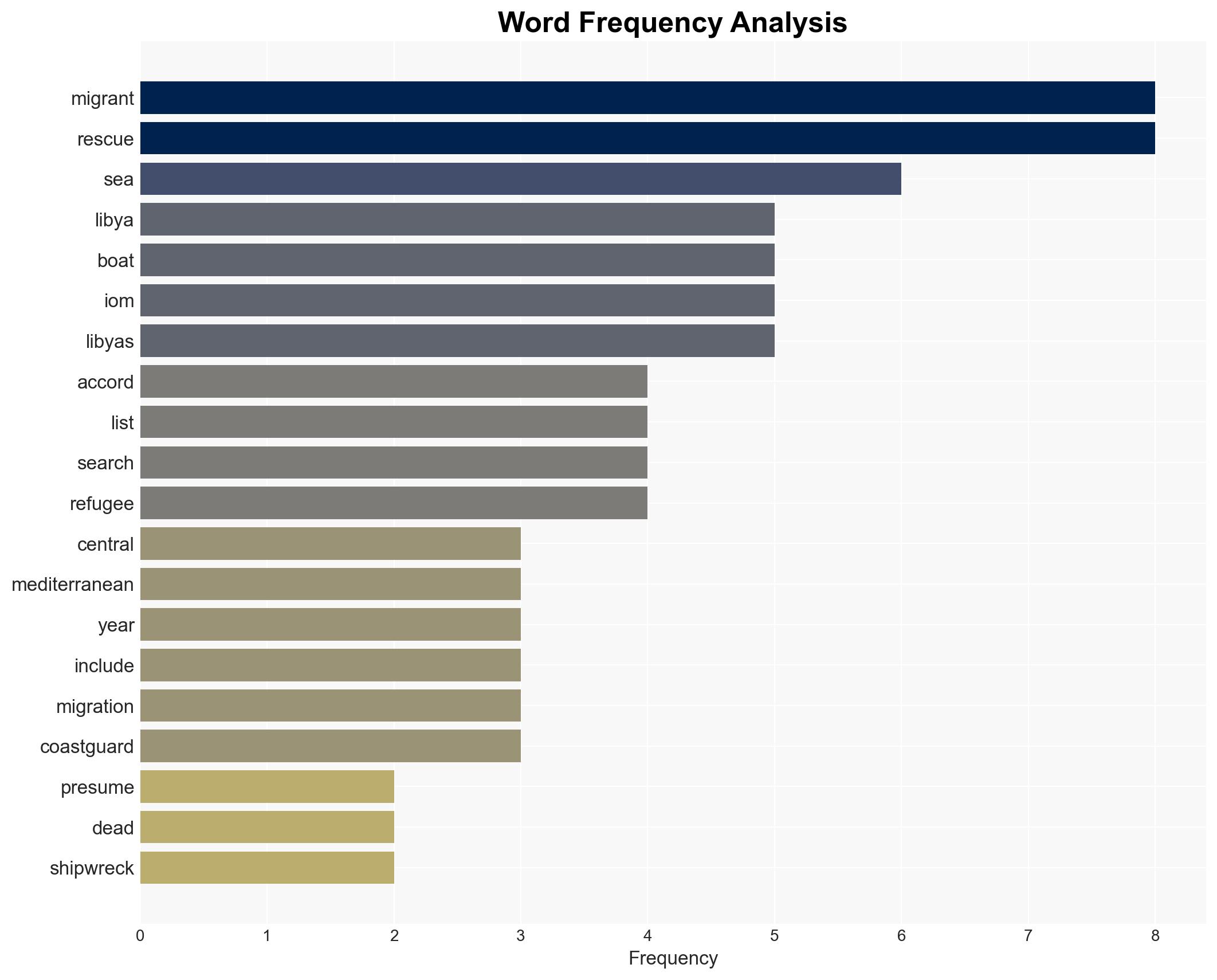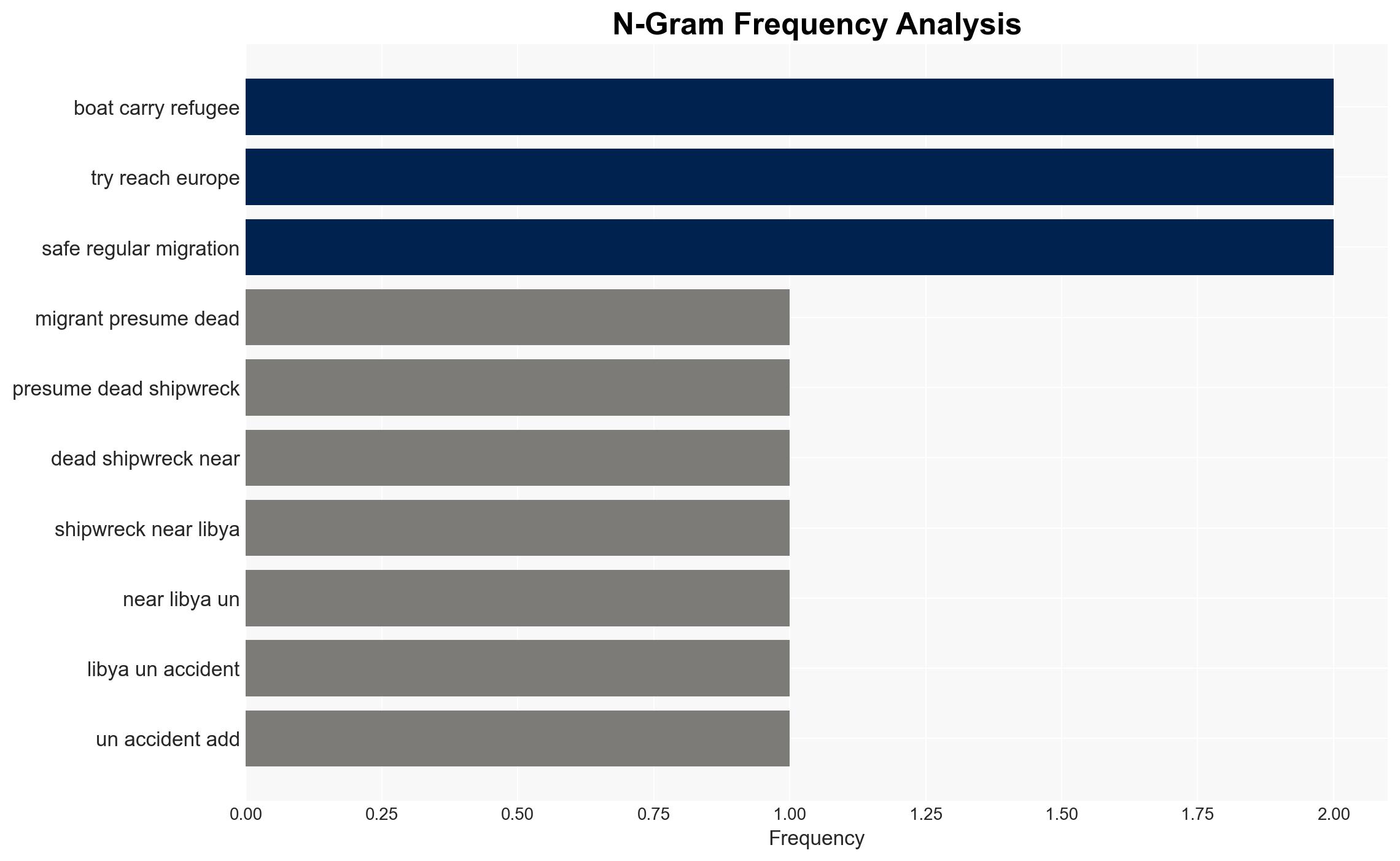Forty-two migrants presumed dead after shipwreck near Libya UN – Al Jazeera English
Published on: 2025-11-12
AI-powered OSINT brief from verified open sources. Automated NLP signal extraction with human verification. See our Methodology and Why WorldWideWatchers.
Intelligence Report: Forty-two migrants presumed dead after shipwreck near Libya UN – Al Jazeera English
1. BLUF (Bottom Line Up Front)
The most supported hypothesis is that the shipwreck is a consequence of inadequate regional cooperation and insufficient safe migration pathways, exacerbated by the actions of Libyan coastguard forces. Confidence Level: Moderate. Recommended actions include enhancing regional cooperation, improving search and rescue operations, and addressing the conduct of the Libyan coastguard.
2. Competing Hypotheses
Hypothesis 1: The shipwreck resulted from overcrowding and poor vessel conditions, a common issue in migrant crossings, exacerbated by inadequate search and rescue operations.
Hypothesis 2: The shipwreck was significantly influenced by the aggressive and potentially violent actions of the Libyan coastguard, as indicated by past incidents of abuse and obstruction of rescue operations.
Hypothesis 2 is more likely given the documented history of the Libyan coastguard’s actions and the suspension of cooperation by European search and rescue organizations due to rights violations.
3. Key Assumptions and Red Flags
Assumptions: It is assumed that the information provided by the IOM and NGOs regarding the Libyan coastguard’s actions is accurate and unbiased. It is also assumed that the lack of safe migration pathways directly contributes to the high risk of such incidents.
Red Flags: Potential bias in reports from NGOs and international organizations due to political agendas. The possibility of misinformation or underreporting by Libyan authorities.
4. Implications and Strategic Risks
The continuation of such incidents poses significant humanitarian risks and could lead to increased political tensions between Libya, the EU, and other regional actors. The situation may exacerbate regional instability, fuel anti-migrant sentiment, and strain EU-Libya relations, potentially impacting broader geopolitical dynamics.
5. Recommendations and Outlook
- Enhance regional cooperation to establish safe and regular migration pathways.
- Strengthen search and rescue operations in the central Mediterranean.
- Investigate and address the conduct of the Libyan coastguard to prevent further rights violations.
- Best-case scenario: Improved cooperation leads to reduced migrant deaths and enhanced regional stability.
- Worst-case scenario: Continued incidents lead to heightened regional tensions and increased migrant fatalities.
- Most-likely scenario: Incremental improvements in cooperation and rescue operations, with ongoing challenges due to political and logistical complexities.
6. Key Individuals and Entities
International Organization for Migration (IOM): Provides data and recommendations on migration issues.
Libyan Coastguard: Accused of rights violations and obstruction of rescue operations.
European Union (EU): Involved in funding and training Libyan coastguard forces.
7. Thematic Tags
Regional Focus: Central Mediterranean, Migration, Human Rights, International Cooperation
Structured Analytic Techniques Applied
- Causal Layered Analysis (CLA): Analyze events across surface happenings, systems, worldviews, and myths.
- Cross-Impact Simulation: Model ripple effects across neighboring states, conflicts, or economic dependencies.
- Scenario Generation: Explore divergent futures under varying assumptions to identify plausible paths.
- Network Influence Mapping: Map influence relationships to assess actor impact.
Explore more:
Regional Focus Briefs ·
Daily Summary ·
Methodology





